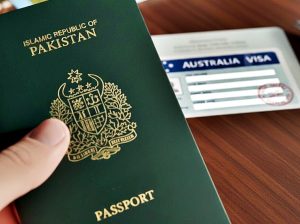DUBAI – The residents of United Arab Emirates would soon be free of hassle to travel to Schengen countries as the process would be digitalized soon.
The emiratis would not have to wait for appointments, stand in a queue or submit their passports for visas as the European Union inches close to streamlining the permit procedure.
In this regard, a significant development took place on Wednesday wherein EU member states’ ambassadors agreed the Council’s negotiating mandate for a proposal to digitalize the visa procedure.
This means the current practice of visa sticker can be replaced with applying and completing the procedure for the visa online to ease the applicants and to improve the security of the Schengen zone.
Maria Malmer Stenergard, Swedish Minister for Migration elaborated that a digital Schengen visa will make it easier for legitimate travelers to apply besides securing the zone.
At the same time, the digital visa will put an end to the risk of falsification and theft of the visa sticker, the minister said and elaborated that the proposed new rules will create a visa application platform which would be a single website, used to forward request to the relevant national visa systems.
The development is also comforting for tour operators who opine that it would be a great step towards promoting Europe as a destination here.
The current practice creates delays as applicants are sometimes unable to get appointments and while their passport is under submission, they can’t travel to other places.
The UAE citizens feel relived on the development as the summer is around the corner and many of the citizens board the planes to Europe to cool off themselves.
How Digitalization Would Work
On the new proposed portal, visa applicants will upload relevant data, electronic copies of their travel- and supporting documents, and pay their visa fees.
Although the modalities have to be finalized yet but in-person appearance at the consulate might be necessary for first-time applicants only and for those whose biometric data are no longer valid or ones with a new travel document.
In case an applicant intends to visit several Schengen countries, the platform will automatically determine which one of them is responsible for examining the application based on the duration of stay. The applicant will also have the possibility to indicate whether the application needs to be processed by a specific member state according to the purpose of travel.
As of now, it is assumed that visas will be issued in digital format, as a 2D barcode, cryptographically signed which will lessen the security risks related to counterfeit, tempering and stolen visa stickers.
What is Schengen Zone
The zone was created in 1985 and allows people and goods to travel freely, usually without showing travel or customs documents. This creates oppurtunities for tourism related revenue for the countries and offers virtually no hurdle for travelers.
The following are part of the zone along with Croatia:
Austria, Belgium, the Czech Republic, Denmark, Estonia, Finland, France, Germany, Greece, Hungary, Iceland, Italy, Latvia, Liechtenstein, Lithuania, Luxembourg, Malta, the Netherlands, Norway, Poland, Portugal, Slovakia, Slovenia, Spain, Sweden and Switzerland.
As far as the visa requirements are concerned, the Schengen zone allows nationals of certain countries to enter the Schengen Area via air, land or sea without a visa for stays of up to 90 days within a 180-day period, while determining the criteria others must meet when making similar visits to Schengen states.
Nationals of EU countries are not only visa-exempt but are legally entitled to enter and reside within each other’s borders visa free. This freedom of movement can, however, be limited in rare cases, as stipulated by EU treaties.














